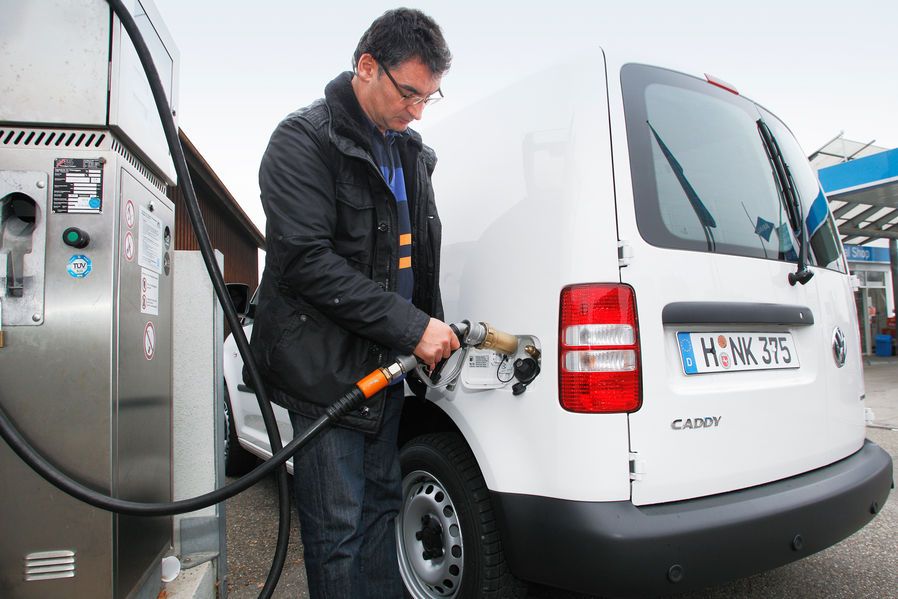
The VW Caddy 1.6 Bifuel with liquefied gas conversion costs only 1800 € more than the 1.2 TSI. Could this be the key to unlock lower fuel prices? FIRMENAUTO magazine tested it in the spring of 2012.
This was perfect timing, because fuel prices were rocketing up. Liquefied gas seems to be a viable option: it is cheap, and was already available at 6000 filling stations in Germany in 2012. Enough reasons to have a closer look at the VW Caddy Bifuel.
VW Caddy 1.6 Bifuel with MPI Gasoline Engine
The drive train for the test was the company-owned 1.6-l (98 cubic inches) MPI gasoline engine that had been converted to liquefied gas. At that time, customers could choose between the 1.2 TSI with 102 HP for 15190 € and the 98 HP liquefied-gas caddy. A premium of 1800 € for the liquefied-gas conversion was not excessive in the opinion of the test crew, especially if you consider that independent retrofitters usually drill a hole somewhere in the rear of the body to fit the liquefied-gas tank connector. VW, on the other hand, conceals the liquefied-gas-tank connector in a protected place under the filler door. The fuel gauge is also cleanly integrated into the instruments.
So far, so good. But how does the VW Caddy 1.6 Bifuel ride? The engine runs almost instantaneously on LPG in the test. The Caddy runs more efficiently on LPG than, say, the Skoda Octavia Combi equipped with the same engine, according to the experts, because the weight of the van is lower. In the city, the VW moves around at low rpm and unexcitedly swims along in traffic..
It’s No Sports Car, But It’s Economical
The experts found driving on the freeways less pleasing. As early soon as 75 mph (120 km/h) was reached, the driver’s cab became uncomfortably loud, because the engine ran at more than 4 000 rpm. It is therefore not surprising that the testers wished for a sixth gear. Brief, intermediate sprints in order to pass should be carefully pondered, according to the experts, because the Caddy would exhibit any kind of agility at higher speeds only after a downshift. Accelerating from 60 km/h to 100 km/h in fifth gear takes almost 23 seconds, which feels like an eternity.
However, the VW Caddy 1.6 Bifuel was in it element when it came to fuel costs. The van achieved 21.6 mpg (10.9 liters of LPG per 100 km) on the standardized test track, at a cost of about 8.30 €. This made the testers appreciate the car.
Customers who don’t have a lot to carry and drive mainly in the city will cope quite nicely with the 1.6 Bifuel. It is cheaper than a diesel and, compared to the more agile 1.2 TSI, amortizes the premium price after approx. 30,000 miles (about 50,000 km).
